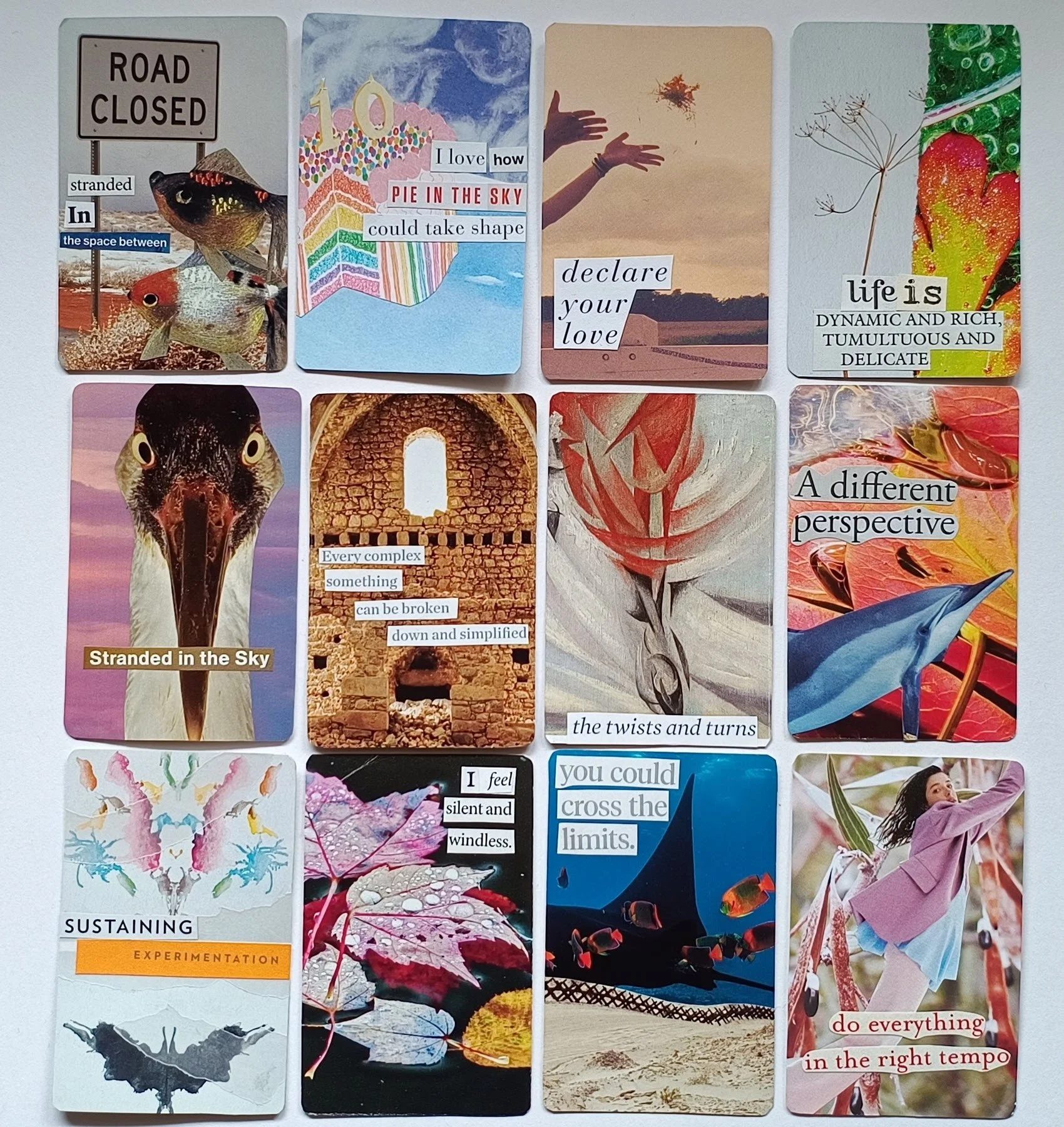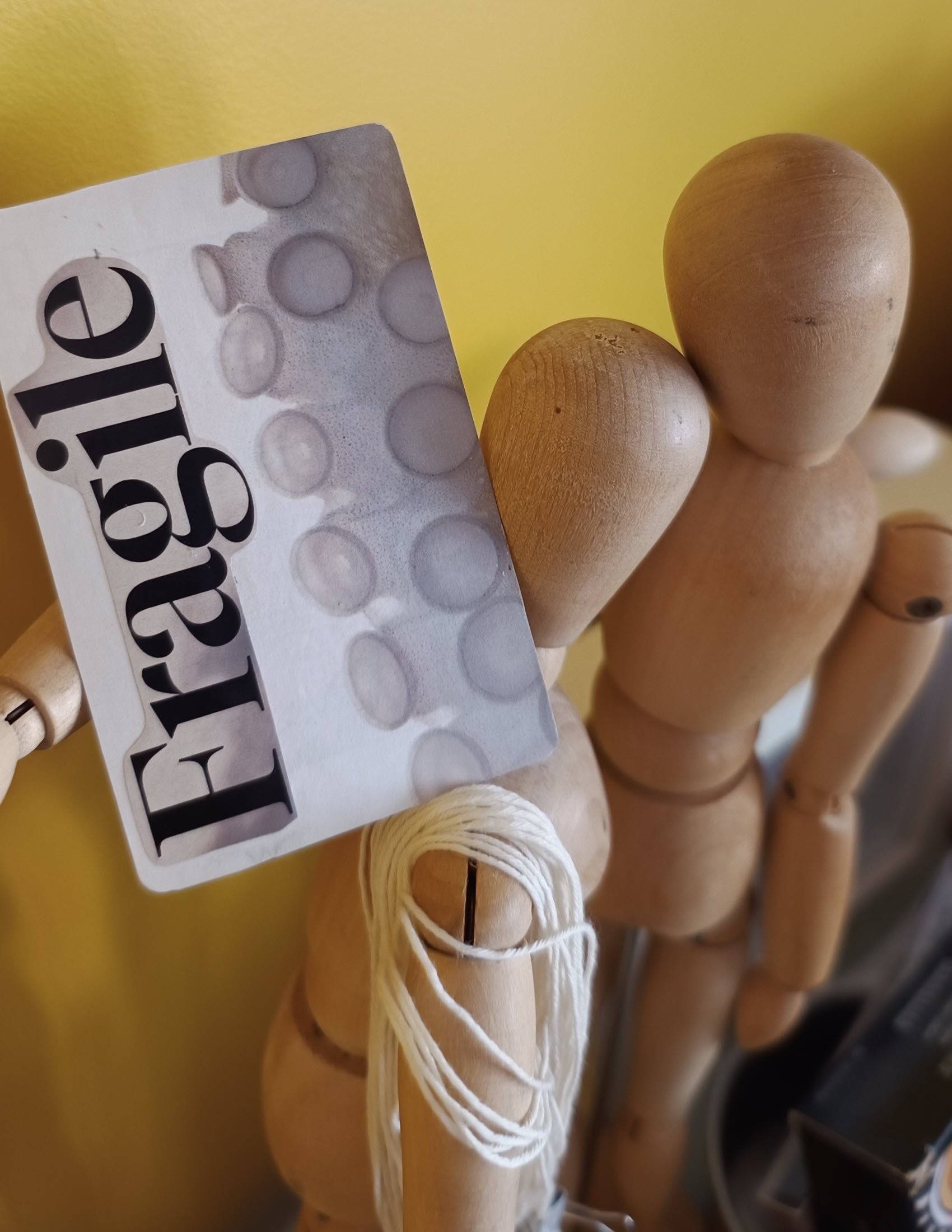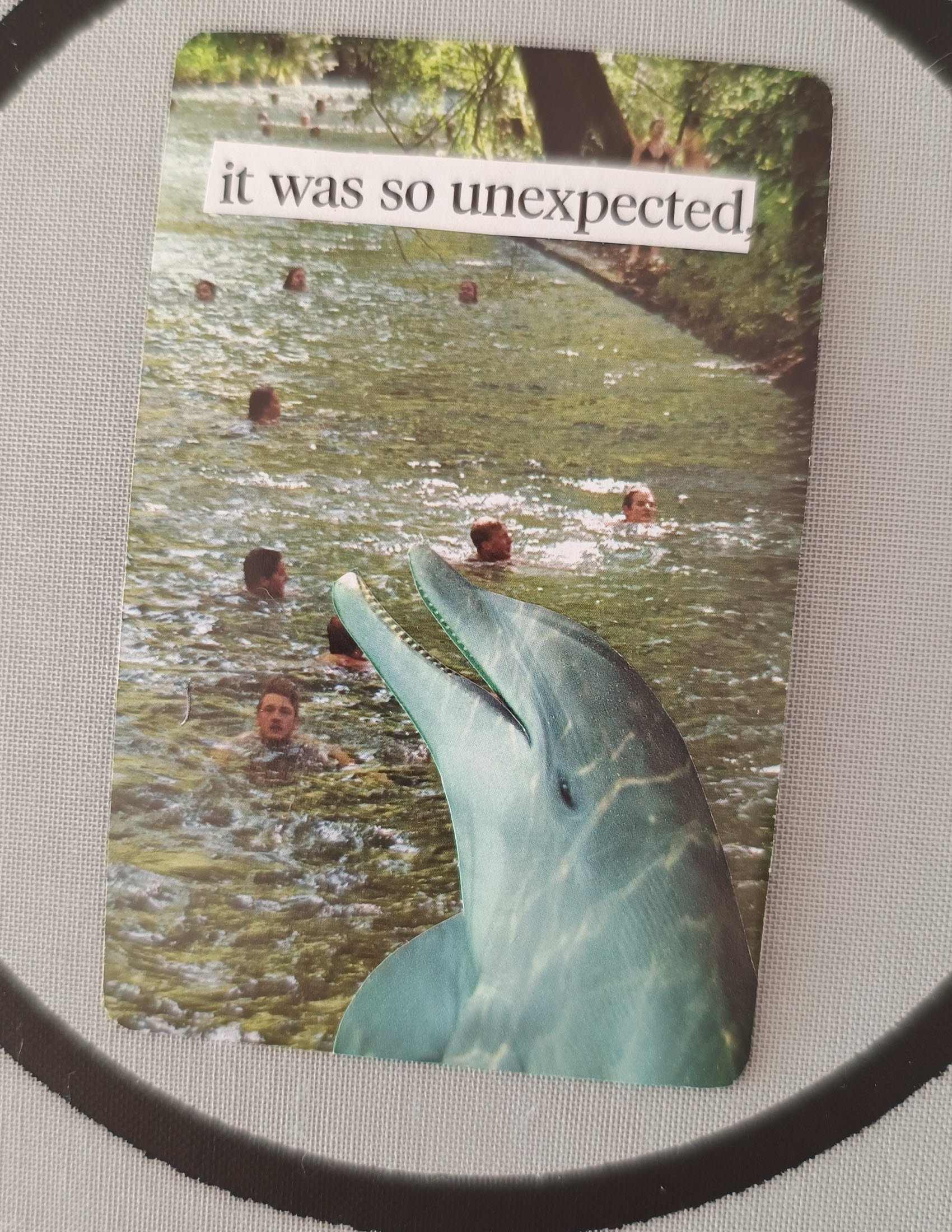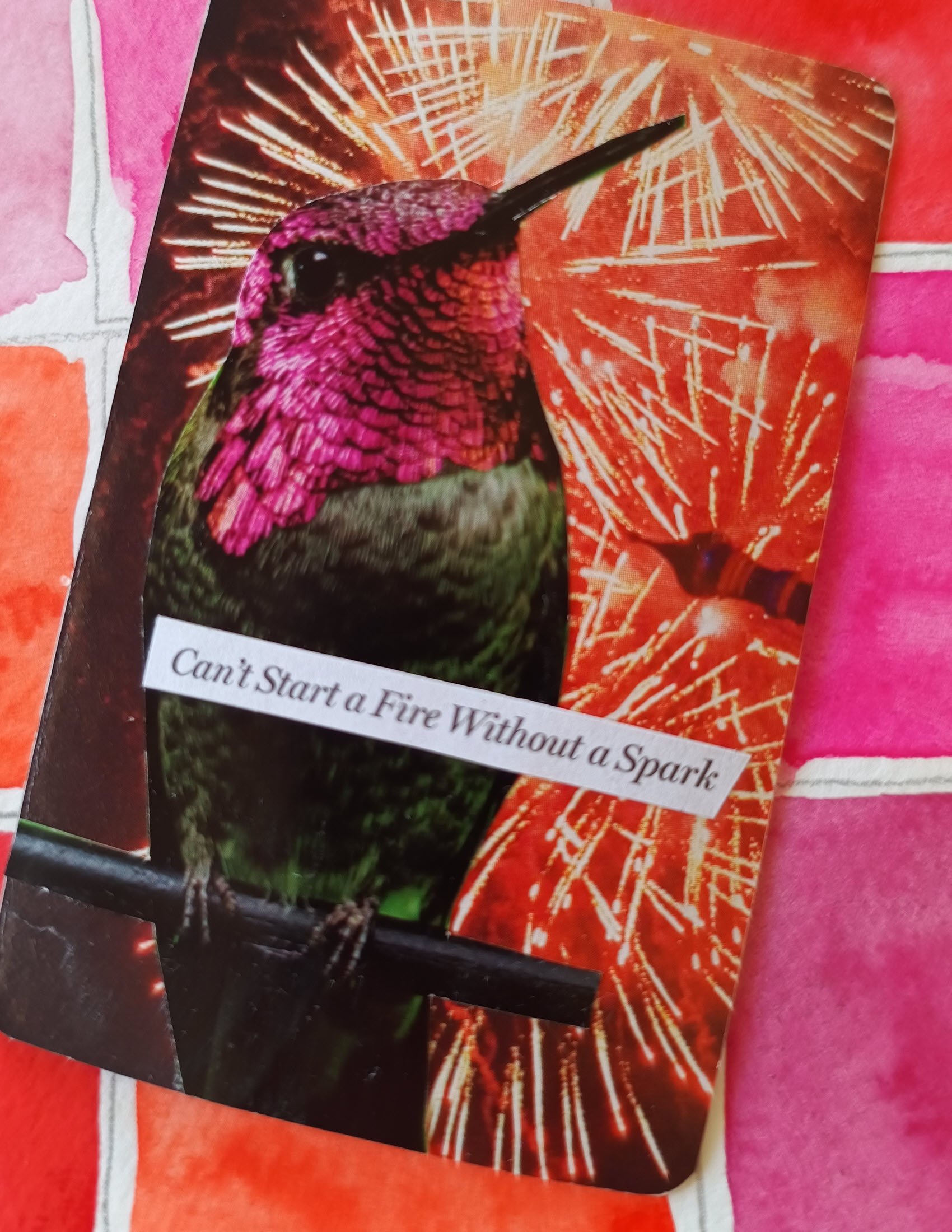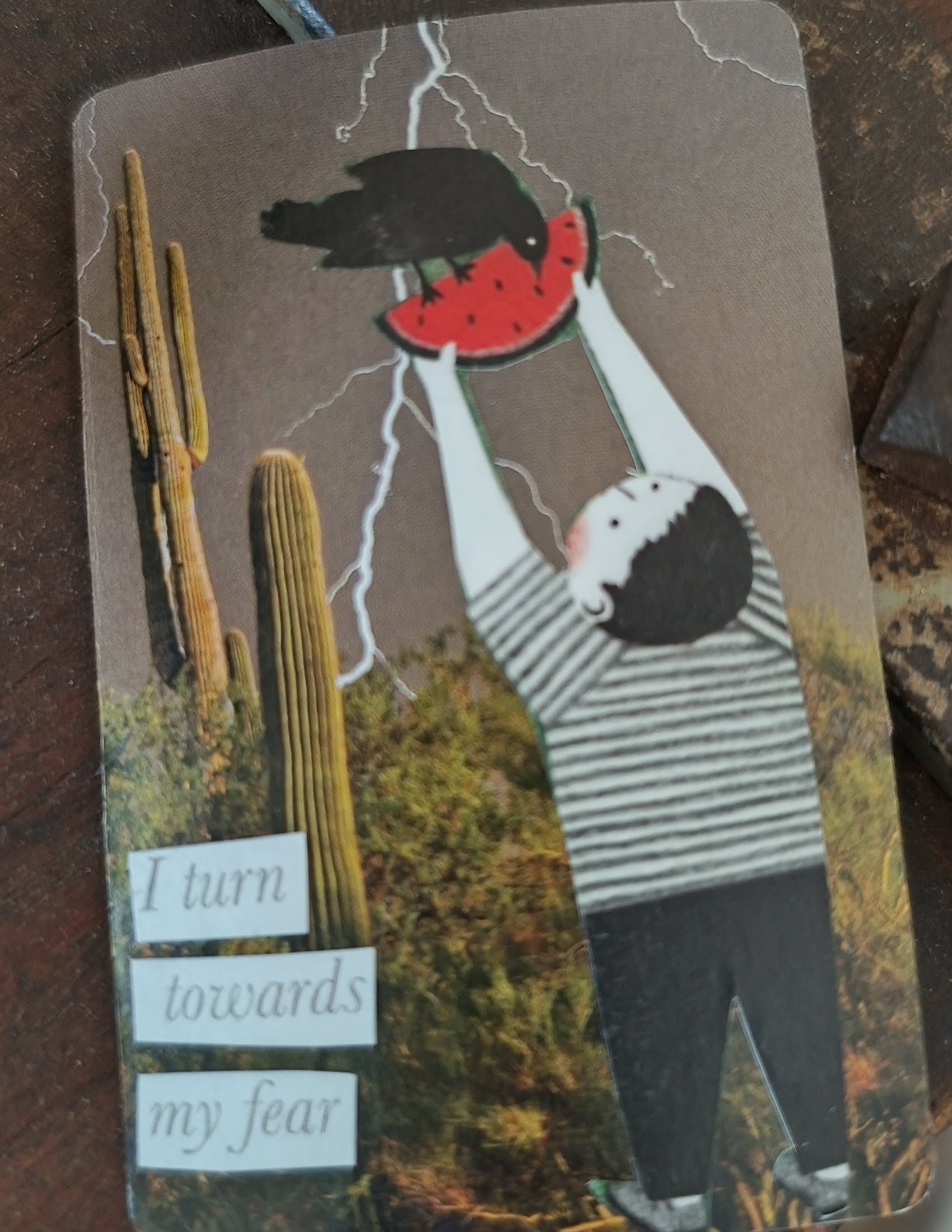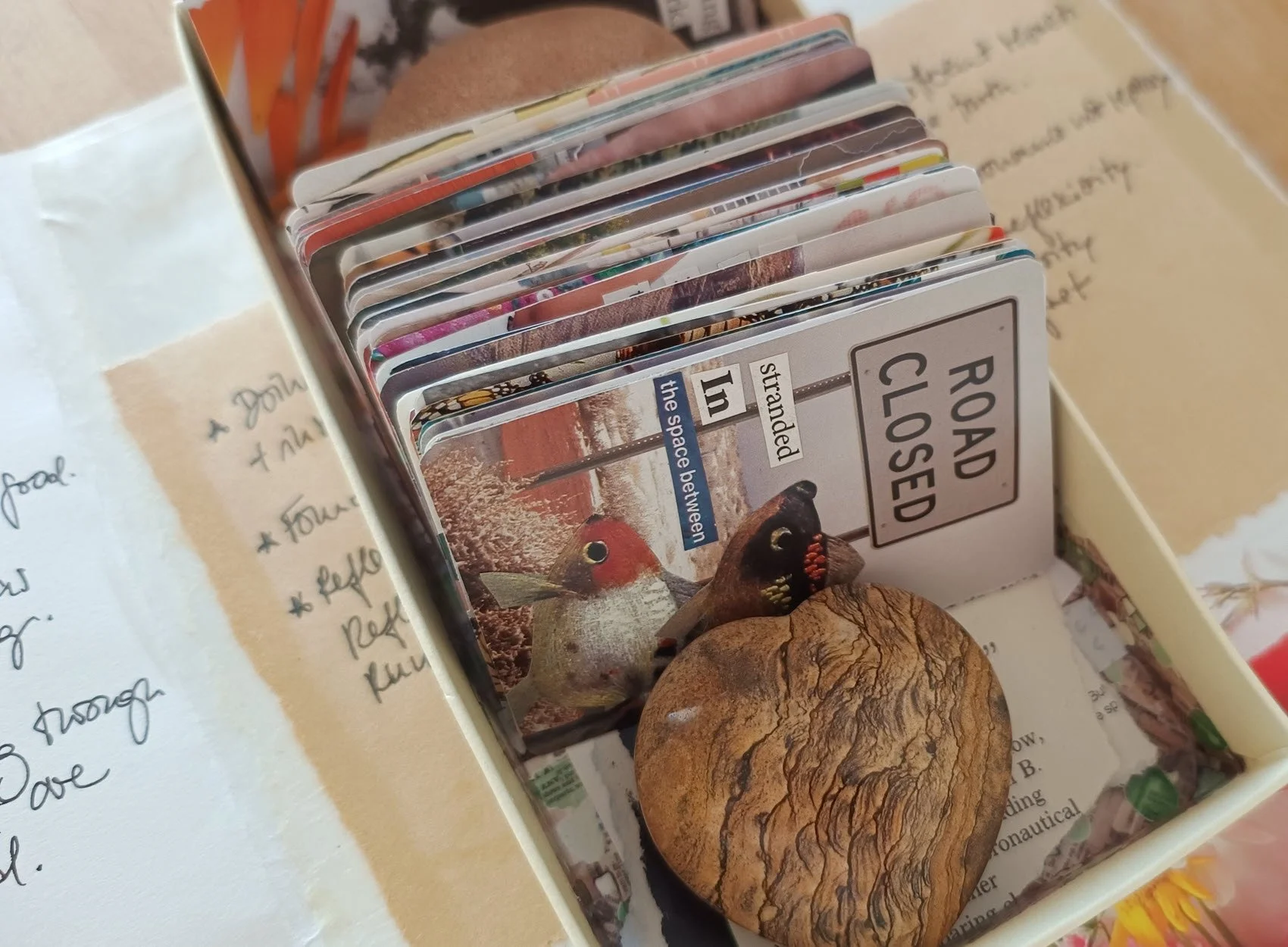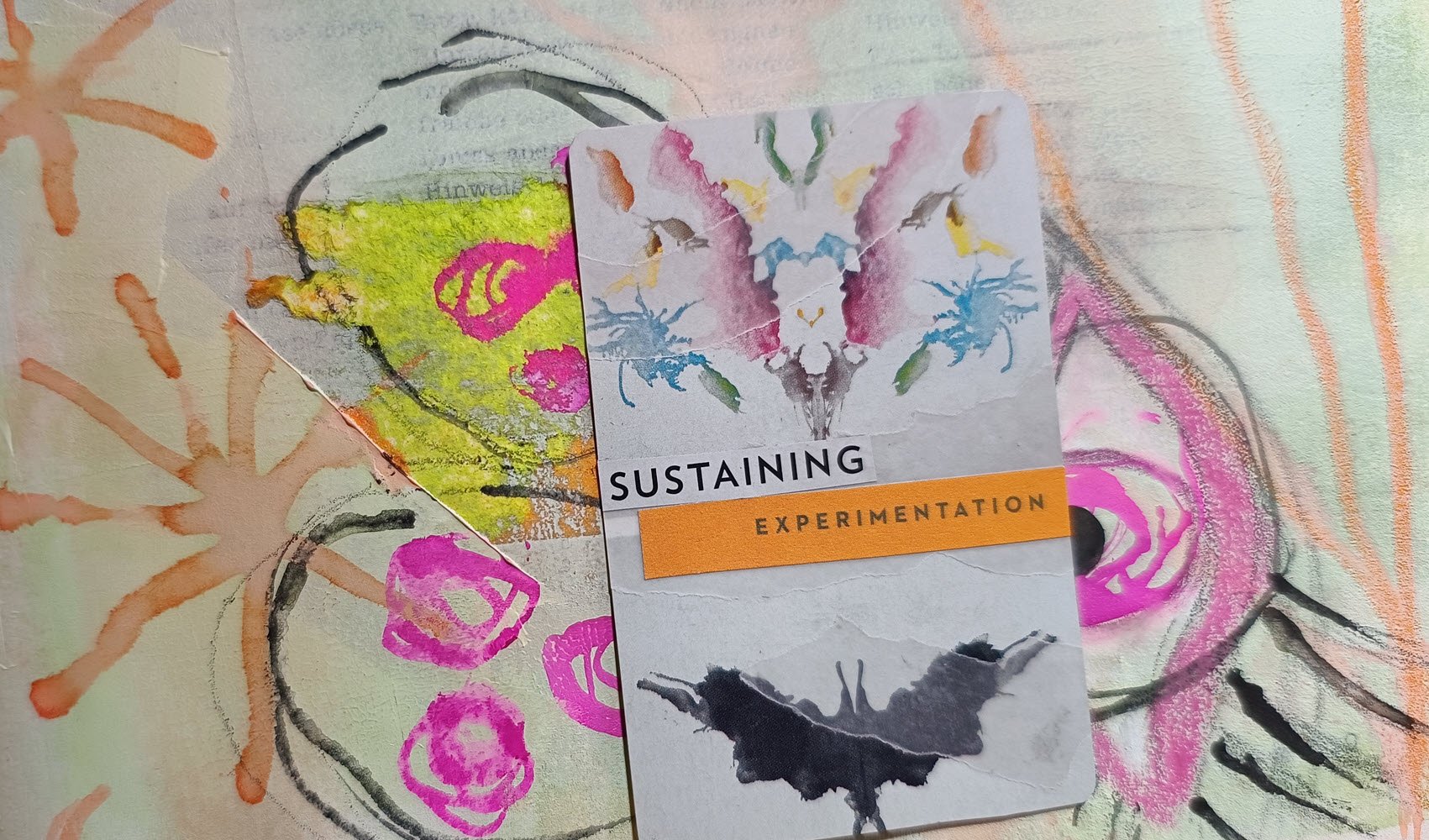The 100 Day Project: what I’m noticing on Day 50
This year, my project is to alter 100 playing cards, each with a collage of images and words.
Noticing 1: any creative process needs openness for change
Of course, any creative process begins with an initial idea. Without that we wouldn’t know where to start and how to anchor ourselves in the unpredictable process of creating.
My initial idea was to alter my playing card by picking words from something I read that day and combining it with collage. I imagined, the 100 cards would become an interesting digest of my 100-Day-long reading journey through books, essays, newsletters, news, social media etc – whatever tickled my fancy, caught my attention, or touched and moved me in some ways.
But I knew that any successful creative project needs to yield to the reality of life, unforeseen events, obstacles, changes in my energy, shifts in what interests me.
In his book The Path of Least Resistance, Robert Fritz calls this openness the Yin of the creative process.
So, before I started, I knew that the source of my words, would be a Yin element of my 100-Day process. I felt that I could easily stall or stumble if I held on too tightly to the idea that the words had to come from something read on the day.
I’m glad I declared this aspect of my initial idea a Yin element. It became clear quite quickly that transferring the words, whether handwritten or by printing something, was a stumbling block. I responded by going back to my trusted magazines I use for found poetry: allowing my eyes to glance over pages and let them pick words that catch my attention or resonate in some way.
Noticing 2: cultivating creativity in community
I’m sharing my cards very sporadically on Instagram and very consistently in a private community. I love the private sharing and I’m glad I didn’t give social media sharing the role of motivator in this 100-Day mission.
As we share about our 100 Days in our private community, we have seen interesting, sometimes deeply touching, sometimes hilarious connections between our daily creations or activities. Given we live in different parts of the world, across different time zones and in different seasons, these crossovers seem even more delightful.
It proves the benefit of creating in community: we nourish each other in an inspiring and generative way.
This collaborative spirit isn’t limited to the content of our projects. It also touches the qualities of how we navigate these 100 days. When one person might feel stuck, someone else’s sharing nudges them forward. The non-competitive spirit means there’s no falling behind.
On a quick sidenote, we know of course, that ‘falling behind’ is a complete illusion, something created by the systems we live in to keep us on track (where that track leads… nobody knows.)
Instead of getting caught up in the fangs of creating for output, we create for ourselves, for our joy, for gratitude, for progressing works of love, for following our curiosity, for looking after ourselves.
Noticing 3: the double-edged sword of having an audience
Having an audience for our creative process can be energising or restrictive.
I knew before I started my 100 Days that sharing publicly on Instagram held the great risk of sharing with energy, then… crickets. With algorithms dictating what we see and the flood of content we’re all bobbing in, I knew it was very possible that my posts would fall through the cracks, and I’d get no or hardly any response. This felt not only pointless, I also feared it could be disheartening and suck the energy right out of my project.
In my private community however, I can rely on caring, generous, engaged and kind interactions. I couldn’t want for a more supportive way of staying dedicated to my 100-Day Invitation.
Yet, with curiosity, I have noticed that having an audience influences my creative process.
These are some of the thoughts that show up:
How might this land for others, in the reality of their lives: is it too upbeat or too downbeat? Too deep or too light?
Could these words/ images be misunderstood? What could be inferred?
Is this a good prompt to jumpstart reflection for others? (This question is linked to the idea that I could use these cards in my coaching, as prompts for discussion, artmaking or reflective writing. While it’s a great idea, and one I will pursue, it pulls me out of the present moment of making and makes me wonder about the future usefulness of what I’m creating.)
Rick Rubin has a very clear view on this. He says,
“When making art, the audience comes last. I'm not making it for them, I'm making it for me—and it turns out that when you make something truly for yourself—you’re doing the best thing you possibly can for the audience.”
I think about this often when I make. I‘ve come up with a couple of reminders for myself:
I can choose: some cards can become a coaching resource, others will remain in the realm of personal artmaking.
I am not my art: sometimes my art is a very immediate reflection of who I am, in that moment. And sometimes, my art is just an expression of something that caught my attention without being a exact reflection of my emotional state, my views, moods, thoughts, struggles… and I’ve let people know this.
Let’s see…
At the time of posting this, I’ve reached Day 58. This process has become a creative sanctuary for my days.
For five or ten minutes I pause to create my card, with no agenda other than curiosity:
Let’s see what I make today.
Let’s see whether I can make it to Day 100.
I have altered playing cards before, but never with the daily rhythm I’ve entered through the 100-Day Project. There’s a good chance this process is here to stay, as an ingredient in my reflective practice. Let’s see.
If you feel curious, intrigued, in need or even ready to cultivate your reflective practice, join me at Sensemaking Studio.
Sensemaking Studio is a series of four-month online programs to cultivate a reflective practice in a small group of 6 like-minded Sense Makers.
Each program can be booked individually or you can create your own longer-term program by joining more than one. In each Studio group, we’ll focus on a specific modality, theme or framework to shape and cultivate a personal and sustainable reflective practice.
Find out more here:
